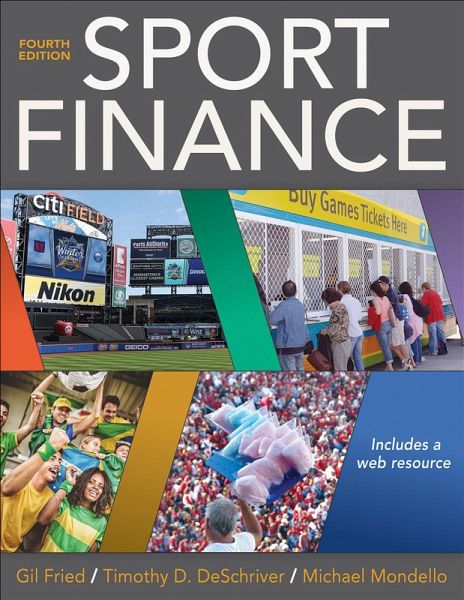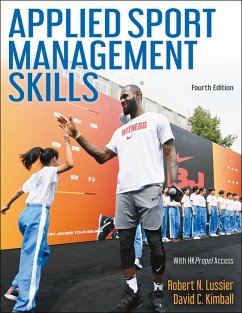Nicht lieferbar

Sport Finance
Versandkostenfrei!
Nicht lieferbar




Sport Finance, Fourth Edition, allows students to grasp fundamental concepts in sport finance through a practical approach that encourages them to take a strategic organizational perspective in gaining a deeper understanding of financial challenges and opportunities.
Gil Fried, JD, is a professor and the chair of the sport management department in the College of Business at the University of New Haven. He worked as a financial analyst with Paul Kagan Associates and analyzed numerous broadcasting contracts. He has written a significant number of books and articles, taught graduate and undergraduate courses in sport finance, and lectured on finance topics to various audiences. In addition to teaching and writing, Fried serves as an expert witness in litigation related to personal injury or financial injury in the sports and entertainment industry. Fried enjoys playing badminton and collecting stamps-particularly revenue and sport stamps to utilize in his teaching. Tim DeSchriver, EdD, is an associate professor in the department of hospitality business management at the University of Delaware. DeSchriver has worked as a field economist for the U.S. Department of Labor and has taught undergraduate and graduate courses in sport finance and sport economics since 1998. He has authored and contributed to several books and sport finance–related publications in refereed journals. In his spare time, DeSchriver enjoys road cycling, mountain biking, and hiking. Michael Mondello, PhD, is a professor in the department of marketing and the associate director of the Vinik Sport and Entertainment Management program at the University of South Florida. He teaches finance and analytics, with research interests in financial and analytical issues related to sport organizations, including competitive balance, economic impact analysis, contingent valuation, ticket pricing, and stadium financing. Mondello’s work has been published in International Journal of Sport Finance, Economic Development Quarterly, Sport Marketing Quarterly, International Journal of Sport Management, Journal of Sports Economics, Journal of Sport Management, and Management Decision. He has also written a Harvard Business School case examining strategic philanthropy and the Tampa Bay Lightning. Mondello was recognized as a research fellow of the North American Society for Sport Management (NASSM) in 2007.
Produktdetails
- Verlag: Human Kinetics Publishers
- Fourth Edition
- Seitenzahl: 376
- Erscheinungstermin: 12. März 2019
- Englisch
- Abmessung: 279mm x 215mm x 20mm
- Gewicht: 872g
- ISBN-13: 9781492559733
- ISBN-10: 1492559733
- Artikelnr.: 54618146
Herstellerkennzeichnung
Libri GmbH
Europaallee 1
36244 Bad Hersfeld
gpsr@libri.de
Für dieses Produkt wurde noch keine Bewertung abgegeben. Wir würden uns sehr freuen, wenn du die erste Bewertung schreibst!
Eine Bewertung schreiben
Eine Bewertung schreiben
Andere Kunden interessierten sich für







